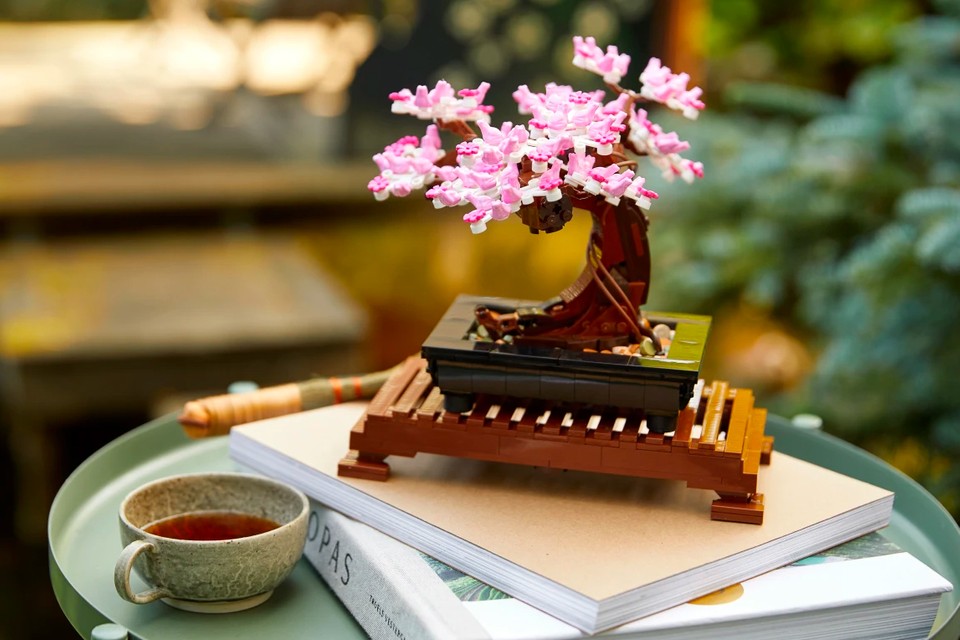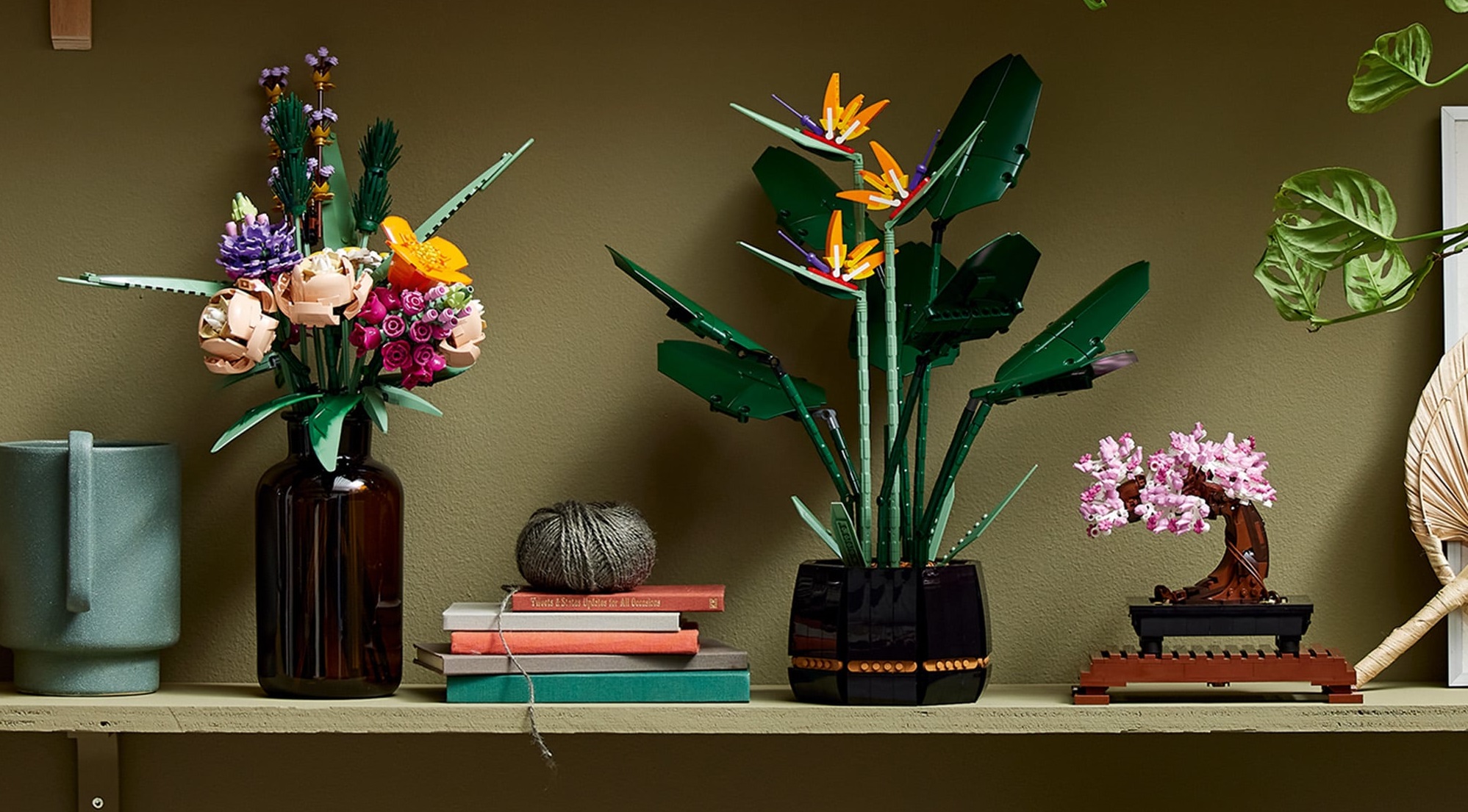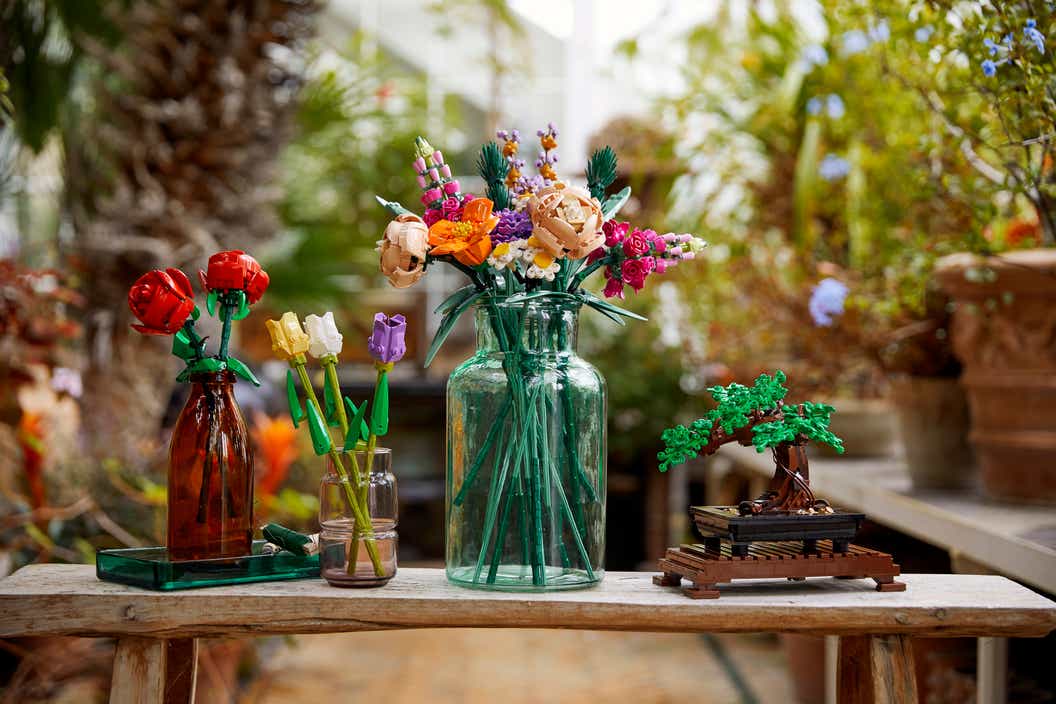LEGO Launches Plant-Based Botanical Collection

For many people, across multiple generations, LEGO sets have been both a staple and a symbol of childhood. For decades, the LEGO classic, colorful bricks have fueled creativity and inspired people of all ages to think outside the box — and the LEGO brand has done just that, with their newest Botanical Collection of plant-based LEGOs!
LEGO has been tinkering with the technology of bio-based plastics for years; and recently, the company launched a new Botanical Collection made of a plant-based alternative to the classic plastic bricks. Because why not make plants out of plants? The LEGO bricks in the Botanical Collection are made from plant-based polyethylene, a type of bioplastic which is derived from ethically-sourced sugarcane. Many brands have begun to use plant-based polyethylene in their packaging, but the LEGO brand is among the first to bring this more planet-friendly material into the realm of playtime.
Considering that the majority of toys are made of traditional plastic, contributing long-lasting waste to landfills all over the world, LEGO’s Botanical Collection is a notable breakthrough in making playtime plastic-free. And the collection was met with a huge response! Both the Flower Bouquet and the Bonsai Tree kits sold out almost immediately when the collection launched in January, and they remained out of stock for quite a while (don’t worry, both are now in stock online!). LEGO also announced an additional botanical build last month: Bird of Paradise, complete with leaves that sway slightly in a breeze, which is now available online for preorder.

Part of the initial hype around the Botanical Collection was that LEGO created these kits primarily for adults:
“As adults look for new ways to switch off and relax, we’re delighted to be able to help them seek solace from their busy everyday lives as they immerse themselves in creating these beautiful botanical builds…The customisable elements and mindful building experience will hopefully help them express their personality as their creativity blossoms.”
– Jamie Berard, Design Lead at the LEGO Group
With over 700 colorful pieces in each kit, LEGO’s customizable botanical builds are sure to provide a relaxing creative experience for many consumers — and the best part is, you never have to remember to water these picturesque plants! People everywhere — even those without a green thumb — can now enjoy the beauty of roses, tulips, snapdragons, cherry blossoms, and more in their own homes. And although the plants aren’t alive, they are all derived from actual sugarcane stalks; which avoids further harm to the planet as a whole.

These LEGO bricks represent an important shift away from petroleum-based plastics. Because sugarcane is such a fast-growing and incredibly resilient crop, it is always in abundance. The sugarcane plant also removes carbon from the atmosphere and has been shown to improve the health of the soil, so planting more of it has added benefits. Sugarcane plastic is 100% recyclable, which gives it the potential to eliminate extraneous plastic waste in our landfills. As an added bonus, the manufacturing process is completely carbon neutral; unlike producing petroleum-based plastics, which produces millions of metric tons of carbon dioxide, and accounts for about 3% of total U.S. energy consumption.
With all this in mind, LEGO’s use of this bioplastic is a huge step towards making plant-based plastic alternative more mainstream; and it’s a great example of a big brand using their power to make forward-thinking changes that will benefit all of us in the long run. LEGO is striving towards making all LEGO products from sustainable materials by 2030, in an effort to combat the massive amount of plastic waste generated by the toy industry. They’ve also created the LEGO Replay Program, which allows consumers to pass along their preloved LEGO sets to children around the world. They are changing the future of playtime to ensure that us, our children, and our children’s children can all enjoy a longer, fun-filled future on this planet. Who knew that these tiny bricks could make such a big impact?


Leave a Reply